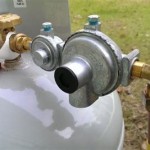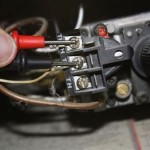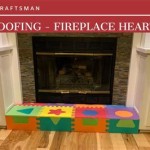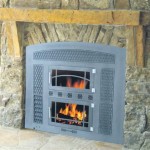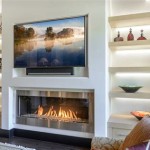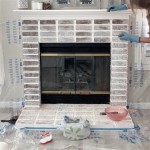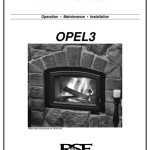Understanding Gas Fireplace Insert Efficiency Ratings
Gas fireplace inserts offer an efficient and aesthetically pleasing alternative to traditional wood-burning fireplaces. They provide supplemental heating and ambiance while minimizing the drawbacks associated with older, less efficient models. A critical aspect of choosing a gas fireplace insert is understanding its efficiency rating. This rating provides insight into how effectively the appliance converts fuel into usable heat for the home and plays a significant role in determining long-term operating costs.
Efficiency ratings for gas fireplace inserts are expressed as a percentage, indicating the proportion of fuel consumed that is converted into heat. A higher efficiency rating translates to less wasted energy and lower fuel consumption. Consumers can use this information to compare different models and select an insert that best suits their heating needs and budget. The efficiency rating is typically found on the appliance's energy guide label or in the manufacturer's specifications.
AFUE: The Standard Efficiency Measurement
The Annual Fuel Utilization Efficiency (AFUE) is a common metric used to assess the overall efficiency of gas-burning appliances, including fireplace inserts. AFUE represents the percentage of heat produced by the appliance that is delivered into the living space. A higher AFUE rating indicates that a greater percentage of the fuel's energy is converted into usable heat, resulting in lower energy bills and reduced environmental impact. It’s crucial to note that AFUE is calculated under controlled laboratory conditions and may not perfectly reflect real-world performance. Factors such as home insulation, climate, and usage patterns can influence actual energy consumption.
It is important to remember that AFUE considers efficiency over an entire heating season, simulating typical usage patterns. This provides a more comprehensive picture of the appliance's performance compared to other tests that may only assess efficiency at specific operating points. A gas fireplace insert with a higher AFUE rating will generally use less fuel to maintain a desired temperature compared to a lower-rated model, leading to long-term savings on heating costs.
AFUE is often misunderstood, especially when comparing it directly to other heating system metrics like HSPF (Heating Seasonal Performance Factor) used for heat pumps. The context of the heating appliance needs to be considered. While a furnace or boiler might have AFUE ratings around 80-98%, a gas fireplace insert is often lower due to its design and purpose, often ranging from 60% to 85%. The primary function of a fireplace insert is often ambiance and supplemental heating, and therefore the design often prioritizes flame aesthetics which can impact maximum achievable efficiency.
Understanding Steady-State Efficiency
Steady-state efficiency refers to the efficiency of the gas fireplace insert when it is operating under stable conditions, typically after it has been running for a period of time and has reached its optimal operating temperature. This measurement provides a snapshot of the appliance's peak performance and can be a useful indicator of its potential efficiency. However, it does not account for factors such as start-up losses or cycling, which can affect overall efficiency. Therefore, steady-state efficiency should be considered in conjunction with other efficiency metrics, such as AFUE, to gain a more complete understanding of the appliance's performance.
Steady-state efficiency is particularly relevant for gas fireplace inserts that are used frequently and for extended periods. In these situations, the appliance will spend a greater proportion of its operating time in a steady-state condition, and the steady-state efficiency will have a more significant impact on overall energy consumption. Conversely, for gas fireplace inserts that are used infrequently or for short periods, the impact of steady-state efficiency may be less pronounced, as start-up losses and cycling will account for a larger proportion of total energy consumption.
Factors Influencing Gas Fireplace Insert Efficiency
Several factors can influence the efficiency of a gas fireplace insert. These include the design of the combustion chamber, the type of burner used, the presence of a heat exchanger, and the venting system. A well-designed combustion chamber will promote complete combustion of the fuel, maximizing heat output and minimizing the production of pollutants. High-efficiency burners can also contribute to improved efficiency by ensuring a clean and consistent flame. Heat exchangers help to transfer heat from the combustion gases to the air circulating through the insert, further increasing efficiency.
The venting system plays a crucial role in the overall efficiency of the gas fireplace insert. Proper venting is essential for removing combustion gases safely and effectively. An improperly sized or installed venting system can reduce efficiency and pose a safety hazard. Direct vent systems, which draw combustion air from outside the home and vent exhaust gases directly outside, are generally more efficient than natural vent systems, which rely on natural convection to vent exhaust gases. Direct vent systems also improve indoor air quality by preventing combustion gases from entering the home.
Maintenance can also significantly affect efficiency. Regular cleaning and servicing of the gas fireplace insert can help to maintain optimal performance and prevent efficiency from degrading over time. Dirty burners, clogged air intakes, and soot buildup can all reduce efficiency and increase fuel consumption. Following the manufacturer's recommendations for maintenance and scheduling regular professional inspections can help to ensure that the gas fireplace insert operates safely and efficiently for many years.
Understanding gas fireplace insert efficiency ratings is essential for making an informed purchasing decision and optimizing energy savings. By considering AFUE, steady-state efficiency, and the factors that influence efficiency, consumers can select a gas fireplace insert that meets their heating needs and budget while minimizing their environmental impact.

Gas Fireplace Inserts Pros And Cons Of Ventless Fireplaces

Top 5 Reasons To Consider A Fireplace Inserts Wi Ia Il

Gas Fireplace Faq Fireplaces Direct Learning Center

The Top 3 Reasons To Choose A Gas Insert Over Log Set Hearthside Hearth Blog

Best Gas Fireplace Inserts Fireplaces Direct Learning Center

Fireplace Inserts 5 Money Saving Benefits Efficient Heating

Why Choose A Fireplace Insert Made In America Xtrordinair

Plan Ahead To Efficiently Heat Your Home This Winter With A New Insert Soky Happenings

Gas Fireplace Insert Cost Forbes Home
.aspx?strip=all)
Top 11 Gas Fireplace Insert Trends Of 2024
Related Posts

